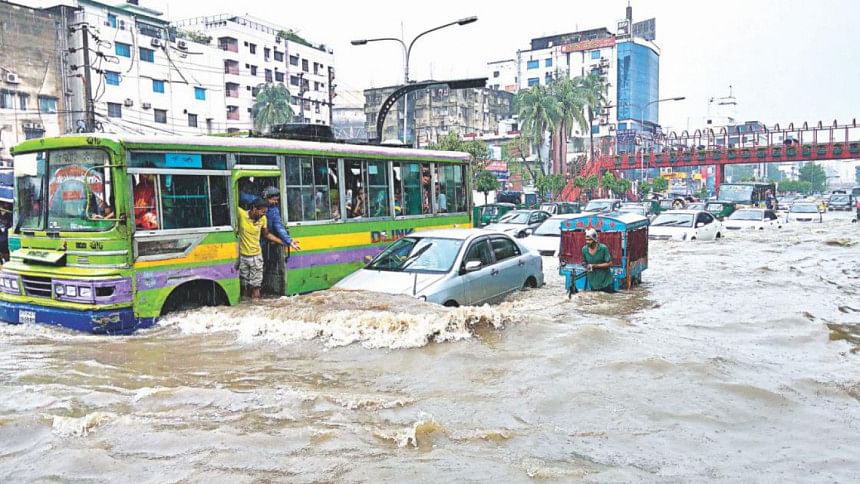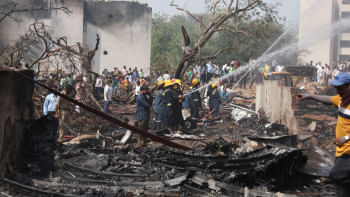Too much rain clogged city's storm sewers

The government has not yet decided which authority will implement the storm drainage master plan, approved in 2014 for tackling flooding on city streets caused by rain.
Dhaka streets suffer deluge every time there is moderate rain, mainly because of inadequate drainage system managed by seven different authorities who have little coordination among themselves, say city planners. The authorities include the two city corporations, Water Development Board and Rajdhani Unnayan Kartripakkha (Rajuk).
However, the master plan proposes to entrust a single authority with the job, Taqsem A Khan, managing director of Dhaka Wasa, said at a press conference yesterday. “The master plan approved in 2014 is yet to be executed properly.”
Dhaka Water Supply and Sewerage Authority organised the event at its headquarters in Karwan Bazar to explain why the capital turned into a swamp on Wednesday.
That day, there was hardly any thoroughfare, lane or by-lane that was not submerged following incessant rains for hours. The rainwater could not run into the low-lying retention areas as they had already been filled after rains the previous days, he said.
The city, however, returned to normal as it did not rain yesterday.
Responding to a recent remark by Dhaka South City Corporation Mayor Sayeed Khokon that Wasa was to blame for the inundation, Taqsem said, “It was a 'flat' statement and I don't agree with it.”
“Wasa alone is not responsible for running the drainage system. If it was then why did the south city corporation take a Tk 500 crore storm drainage scheme and the north city corporation has been setting up storm drainage pipelines over the years?”
“Isn't the mayor's statement self-contradictory?” he asked.
WASA EXPLANATION ON CITY'S INUNDATION
The WASA MD said all their pumps at four stations were in operation to drain out rainwater on Wednesday but the city streets were flooded because of downpour for around six hours.
All the existing artificial storm drainage facilities, including 370km Wasa pipelines and over 200 km city corporation feeder drains, and the natural canals had already been filled with water following rains over the last few days.
As a result, such a huge volume of rainwater on Wednesday could not recede anywhere, causing the waterlogging, he said.
Taqsem claimed that they had cleaned the storm pipelines and canals and removed solid wastes from the drains.
The two city corporations are capable of collecting about 80 percent of 6,000 tonnes solid wastes the capital produces every day. The rest of the wastes go into the drains, he said.
“Also, there is hardly any water retention facility left in the city on its way to the run off to rivers,” he said, adding, “Dhaka's Detailed Area Plan has not been followed accordingly and most of the low-lying wetlands and flood flow zones have been filled up.”

 For all latest news, follow The Daily Star's Google News channel.
For all latest news, follow The Daily Star's Google News channel. 








Comments